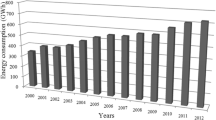Abstract
The paper presents the setpoint control for air heating in a church to minimize moisture related mechanical stress in wooden interior parts, with the focus on the preservation of a monumental organ. The setpoint operation of the heating, ventilation, and air conditioning (HVAC) system is evaluated by simulation using MatLab, COMSOL and Simulink models. The main model components are presented and combined in a single integrated Simulink model: (1) a HAMBase Simulink building model for simulating the indoor temperature and relative humidity, (2) a COMSOL partial differential equation model for simulating detailed dynamic moisture transport and related mechanical stresses in the monumental wood (organ) and (3) a Simulink controller model. The main advantage of the integrated model is that it directly simulates the impact of HVAC control setpoint strategies on the indoor climate and the related mechanical stresses in wooden objects, like a monumental organ. As control strategy the limited indoor air temperature changing rate is discussed. Recommendations from international literature suggest that a limitation of the relative humidity changing rate of 2 to 5RH%/h will preserve the interior of churches. This study shows that a limitation of indoor air relative humidity changing rate of 2RH%/h can reduce mechanical stresses by a factor of 2.5, compared to maximum capacity heating.
Similar content being viewed by others
References
COMSOL (2006). Structrural mechanics module version 3.3. COMSOL Inc.
Hibbeler RC (1997). Mechanics of Materials. Third Edition. Upper Saddle River, NJ: Prentice-Hall.
Jakiela S, Bratasz L, Kozlowski R (2008). Numerical modeling of moisture movement and related stress field in lime wood subjected to changing climate conditions. Wood Science and Technology, 42: 21–37.
Künzel HM (1994). Verfahren zur Eind- und Zweidimensionalen Berechnung des gekoppelten Wärme- und Feuchtetransports in Bauteilen mit einfachen Kennwerten. Dissertation Universität Stuttgart. (in German)
Kowalski SJ, Rybicki A (1999). Computer simulation of drying optimal control. Transport in Porous Media, 34: 227–238.
Kowalski SJ (2002). Modeling of fracture phenomena in dried materials. Chemical Engineering Journal, 86: 145–151.
Lekhnitskii SG (1963). Theory of Elasticity of an Anisotropic Elastic Body. San Francisco, CA: Holden-Day.
Schellen HL (2002). Heating monumental churches. Indoor climate and preservation of cultural heritage. PhD thesis, Eindhoven University of Technology.
Schellen HL, van Schijndel AWM (2010). Numerical modelling of moisture related mechanical stress in wooden cylindrical objects using COMSOL: A comparative benchmark. Paper presented in COMSOL Conference, Paris, France.
van Schijndel AWM (2007). Integrated heat air and moisture modeling and simulation. PhD Dissertation, Eindhoven University of Technology.
van Schijndel AWM (2003). Modeling and solving building physics problems with FemLab. Building and Environment, 38: 319–327.
van Schijndel AWM (2009). Integrated modeling of dynamic heat, air and moisture processes in buildings and systems using Simulink and COMSOL. Building Simulation, 2: 143–155.
Simulink (1990). Simulink: Dynamic System Simulation for Matlab. The Mathworks, Inc.
de Wit MH (2006). HAMBase: Heat, Air and Moisture Model for Building and Systems Evaluation, Bouwstenen 100. Eindhoven University of Technology.
Zimmerman WBJ (2006). Multiphysics Modelling with Finite Element Methods. Hackensack, NJ: World Scientific Publishing.
Author information
Authors and Affiliations
Corresponding author
Rights and permissions
About this article
Cite this article
Schellen, H.L., van Schijndel, A.W.M. Setpoint control for air heating in a church to minimize moisture related mechanical stress in wooden interior parts. Build. Simul. 4, 79–86 (2011). https://doi.org/10.1007/s12273-011-0026-7
Received:
Revised:
Accepted:
Published:
Issue Date:
DOI: https://doi.org/10.1007/s12273-011-0026-7




